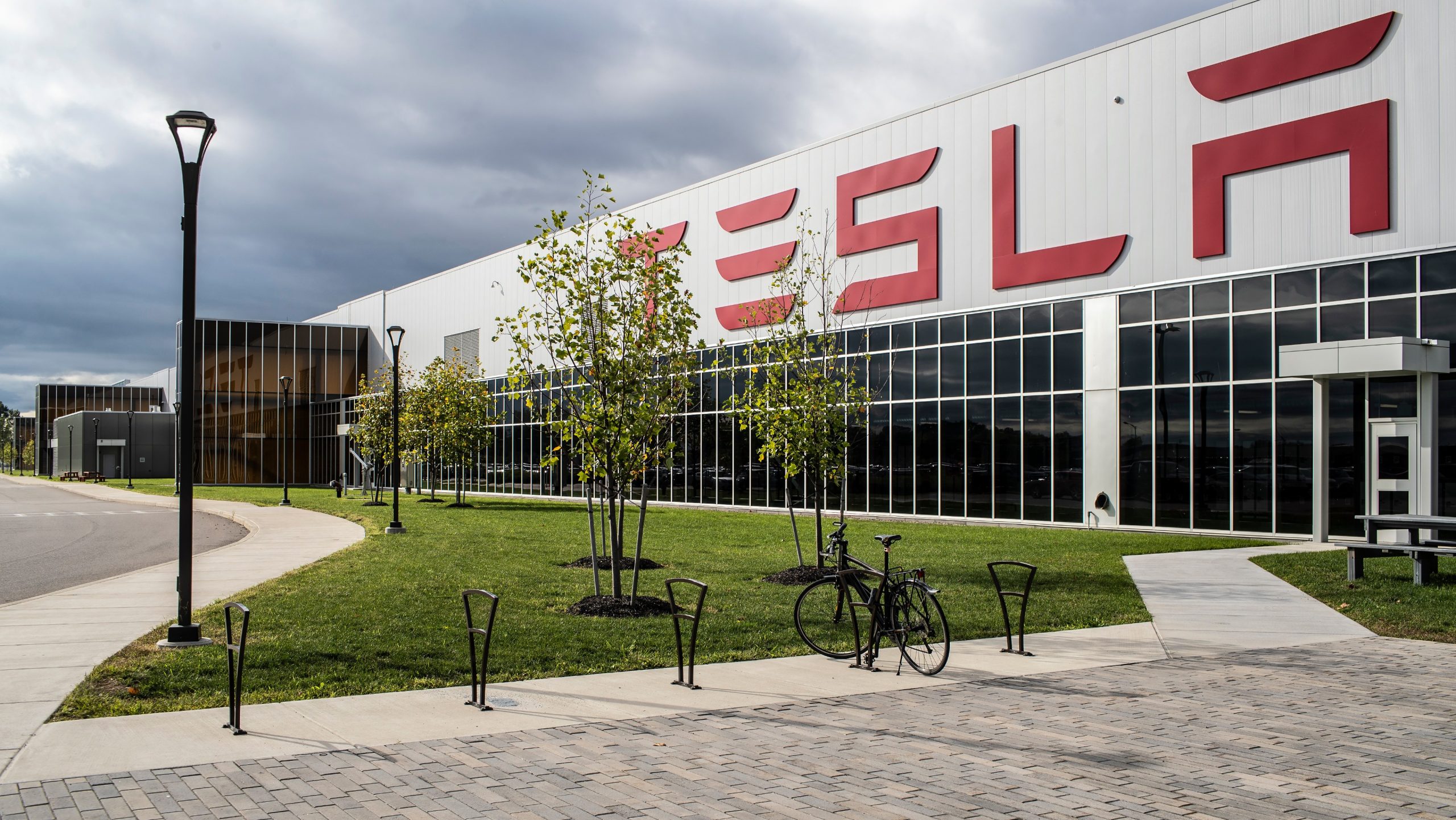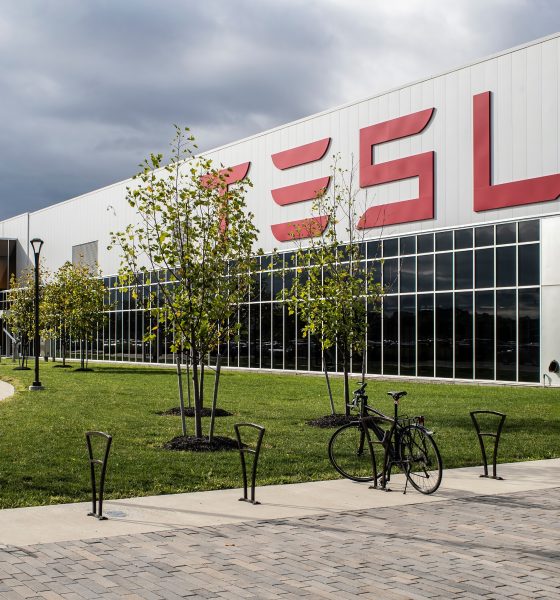It is not rare to see Tesla enthusiasts from India asking CEO Elon Musk about updates on the electric car maker’s entry into the country. This is especially notable considering that some India-based EV enthusiasts have been holding on to their Model 3 deposits for several years now. Musk, for his part, has remarked that it is quite difficult to enter India as an electric car company due to local protectionist policies. But perhaps Tesla’s entry into India does not necessarily have to be driven by its electric cars. Perhaps a more viable strategy is to enter India through Tesla Energy.
Tesla’s entry in India has pretty much been in the air for years. Back in June 2017, Elon Musk noted that Tesla was “In discussions with the government of India requesting temporary relief on import penalties/restrictions until a local factory is built.” Almost a year later, Musk posted an update on Tesla’s impending India push on Twitter, stating that while the company would love to enter the country, there are some “challenging government regulations” that need to be addressed first. The CEO then stated that Tesla will be in India as soon as then CFO Deepak Ahuja, who hails from the country, believes it’s the right time.
References to India’s challenging regulations were echoed by Musk a year later, following the 2019 SpaceX Hyperloop Pod Competition. After the competition, the Avishkar Hyperloop team from IIT Madras asked Musk when Tesla will be in India. Musk reportedly responded that the company may enter the country in about a year’s time. Since then, Musk has been quite silent about Tesla’s India push, until recently, when he apologized to an EV enthusiast from the country who has held a Model 3 reservation for four years now.
Challenging regulations aside, the idea of Tesla establishing a dedicated electric vehicle factory in India may not be the optimal idea for now. As noted by Galileo Russell in a recent livestream on his Hyperchange YouTube channel, vehicle sales in India are dominated largely by two-wheeled or three-wheeled vehicles, thanks in part to the population density of the region. There is an emerging electric vehicle market in the country, but it will likely take years before it matures enough to develop a considerable electric passenger vehicle segment.
Best-selling passenger cars in India tend to be lower-priced and smaller as well, making the market very competitive. This means that Tesla, whose smallest vehicle is a premium midsize sedan in the form of the Model 3, would likely have challenges attracting the conventional Indian car buyer. The story completely changes if Tesla has a smaller, more affordable vehicle in its lineup, of course, but the release of such a car could still be a few years out.
With this in mind, does it mean that it won’t be worth it for Tesla to enter the Indian market? Absolutely not. While India may not be a very attractive market for large premium vehicles, the country is the perfect place to ramp an energy business that’s focused on solar panels and battery storage. Fortunately, Tesla actually has an Energy department that fits this bill, and the company is hard at work in ramping it up. Tesla Energy could then be the perfect entry point in India, on account of the country’s push towards sustainability. India’s power grid is known for its areas of improvement as well, making it a good fit for Tesla’s battery storage solutions.
Provided that Tesla Energy could price its solar panels and battery storage devices competitively, the company could have a good shot at making an impact in the Indian market. Tesla already prices its solar solutions in the United States very aggressively, and with a dedicated facility in India (perhaps a Gigafactory India is in order?), the company could take over a good portion of the country’s residential and commercial market. Such would go hand in hand with Tesla’s next-generation batteries as well, which are expected to be cheaper to produce and far more durable and high powered compared to their predecessors.

News
Tesla FSD fleet is nearing 7 billion total miles, including 2.5 billion city miles
As can be seen on Tesla’s official FSD webpage, vehicles equipped with the system have now navigated over 6.99 billion miles.

Tesla’s Full Self-Driving (Supervised) fleet is closing in on almost 7 billion total miles driven, as per data posted by the company on its official FSD webpage.
These figures hint at the massive scale of data fueling Tesla’s rapid FSD improvements, which have been quite notable as of late.
FSD mileage milestones
As can be seen on Tesla’s official FSD webpage, vehicles equipped with the system have now navigated over 6.99 billion miles. Tesla owner and avid FSD tester Whole Mars Catalog also shared a screenshot indicating that from the nearly 7 billion miles traveled by the FSD fleet, more than 2.5 billion miles were driven inside cities.
City miles are particularly valuable for complex urban scenarios like unprotected turns, pedestrian interactions, and traffic lights. This is also the difference-maker for FSD, as only complex solutions, such as Waymo’s self-driving taxis, operate similarly on inner-city streets. And even then, incidents such as the San Francisco blackouts have proven challenging for sensor-rich vehicles like Waymos.
Tesla’s data edge
Tesla has a number of advantages in the autonomous vehicle sector, one of which is the size of its fleet and the number of vehicles training FSD on real-world roads. Tesla’s nearly 7 billion FSD miles then allow the company to roll out updates that make its vehicles behave like they are being driven by experienced drivers, even if they are operating on their own.
So notable are Tesla’s improvements to FSD that NVIDIA Director of Robotics Jim Fan, after experiencing FSD v14, noted that the system is the first AI that passes what he described as a “Physical Turing Test.”
“Despite knowing exactly how robot learning works, I still find it magical watching the steering wheel turn by itself. First it feels surreal, next it becomes routine. Then, like the smartphone, taking it away actively hurts. This is how humanity gets rewired and glued to god-like technologies,” Fan wrote in a post on X.
News
Tesla starts showing how FSD will change lives in Europe
Local officials tested the system on narrow country roads and were impressed by FSD’s smooth, human-like driving, with some calling the service a game-changer for everyday life in areas that are far from urban centers.

Tesla has launched Europe’s first public shuttle service using Full Self-Driving (Supervised) in the rural Eifelkreis Bitburg-Prüm region of Germany, demonstrating how the technology can restore independence and mobility for people who struggle with limited transport options.
Local officials tested the system on narrow country roads and were impressed by FSD’s smooth, human-like driving, with some calling the service a game-changer for everyday life in areas that are far from urban centers.
Officials see real impact on rural residents
Arzfeld Mayor Johannes Kuhl and District Administrator Andreas Kruppert personally tested the Tesla shuttle service. This allowed them to see just how well FSD navigated winding lanes and rural roads confidently. Kruppert said, “Autonomous driving sounds like science fiction to many, but we simply see here that it works totally well in rural regions too.” Kuhl, for his part, also noted that FSD “feels like a very experienced driver.”
The pilot complements the area’s “Citizen Bus” program, which provides on-demand rides for elderly residents who can no longer drive themselves. Tesla Europe shared a video of a demonstration of the service, highlighting how FSD gives people their freedom back, even in places where public transport is not as prevalent.
What the Ministry for Economic Affairs and Transport says
Rhineland-Palatinate’s Minister Daniela Schmitt supported the project, praising the collaboration that made this “first of its kind in Europe” possible. As per the ministry, the rural rollout for the service shows FSD’s potential beyond major cities, and it delivers tangible benefits like grocery runs, doctor visits, and social connections for isolated residents.
“Reliable and flexible mobility is especially vital in rural areas. With the launch of a shuttle service using self-driving vehicles (FSD supervised) by Tesla in the Eifelkreis Bitburg-Prüm, an innovative pilot project is now getting underway that complements local community bus services. It is the first project of its kind in Europe.
“The result is a real gain for rural mobility: greater accessibility, more flexibility and tangible benefits for everyday life. A strong signal for innovation, cooperation and future-oriented mobility beyond urban centers,” the ministry wrote in a LinkedIn post.
News
Tesla China quietly posts Robotaxi-related job listing
Tesla China is currently seeking a Low Voltage Electrical Engineer to work on circuit board design for the company’s autonomous vehicles.

Tesla has posted a new job listing in Shanghai explicitly tied to its Robotaxi program, fueling speculation that the company is preparing to launch its dedicated autonomous ride-hailing service in China.
As noted in the listing, Tesla China is currently seeking a Low Voltage Electrical Engineer to work on circuit board design for the company’s autonomous vehicles.
Robotaxi-specific role
The listing, which was shared on social media platform X by industry watcher @tslaming, suggested that Tesla China is looking to fill the role urgently. The job listing itself specifically mentions that the person hired for the role will be working on the Low Voltage Hardware team, which would design the circuit boards that would serve as the nervous system of the Robotaxi.
Key tasks for the role, as indicated in the job listing, include collaboration with PCB layout, firmware, mechanical, program management, and validation teams, among other responsibilities. The role is based in Shanghai.
China Robotaxi launch
China represents a massive potential market for robotaxis, with its dense urban centers and supportive policies in select cities. Tesla has limited permission to roll out FSD in the country, though despite this, its vehicles have been hailed as among the best in the market when it comes to autonomous features. So far, at least, it appears that China supports Tesla’s FSD and Robotaxi rollout.
This was hinted at in November, when Tesla brought the Cybercab to the 8th China International Import Expo (CIIE) in Shanghai, marking the first time that the autonomous two-seater was brought to the Asia-Pacific region. The vehicle, despite not having a release date in China, received a significant amount of interest among the event’s attendees.










